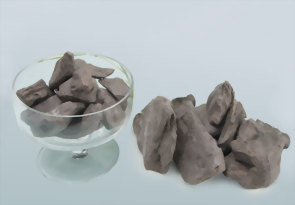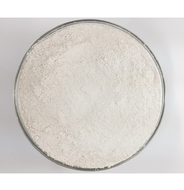Ball Clay
Ball Clays is a fine-grained, highly plastic sedimentary clay, which fire to a light or near white color.
They are used mainly in the manufacture of ceramic whiteware and are valued for their key properties of plasticity, which makes them easy to mould, their unfired strength and the fact that when fired they have a light color.
Ball Clays exhibit highly variable compositions and consist not of a single mineral but a mixture of mainly three minerals; kaolinite, mica and quartz, with each mineral contributing different properties to the clay.
Application
Ball clays are used in many different industries, but in particular form a vital component in ceramic manufacturing.
Other uses include kiln furniture, enamels and glazes, building bricks, and fillers and sealants.
Tableware.Sanitary ware.Tiles
The principal types of ceramic whiteware that contain ball clay are sanitary-ware, wall and floor tiles and tableware.
Kaolin (China clay) produces a very white color when it is fired, but used alone it is brittle and weak and must be mixed with ball clay to produce a workable, malleable raw material.
In a ceramic body, ball clay acts as binding agent and contributes to plasticity, workability and strength in the pre-fired state. This allows the ceramic body to be formed and handled safely between the shaping and firing body. Some ball clays are particularly valued for their fluid and casting properties, which are important for slip casting, especially in the manufacture of sanitaryware.
(refer. Mineral Planning Factsheet-Ball Clay by British Geological Survey)
- Chemical Analysis of Ball Clay (%)
|
Model |
SiO2 |
Al2O3 |
Fe2O3 |
TiO2 |
CaO |
MgO |
K2O |
Na2O |
Ig. Loss |
|
ZZ05 |
52.14 |
33.34 |
0.45 |
0.05 |
0.05 |
0.02 |
0.97 |
0.21 |
12.61 |
|
HC90 |
47.56 |
37.13 |
0.50 |
0.06 |
0.03 |
0.07 |
0.27 |
0.05 |
14.33 |
|
HC70 |
51.60 |
33.59 |
0.52 |
0.08 |
0.30 |
0.01 |
1.13 |
0.25 |
12.52 |
|
HC39 |
58.85 |
27.99 |
0.83 |
0.33 |
0.10 |
0.11 |
1.24 |
0.01 |
10.49 |
|
HC405 |
46.45 |
35.50 |
1.62 |
0.48 |
0.14 |
0.19 |
0.50 |
0.12 |
15 |
- Physical Property of Ball Clay
|
Model |
Whiteness |
Shrinkage (%) |
Water Absorption |
M.O.R. (kgf/cm2) |
Viscosity |
Particle Size |
Moisture (%) |
|
ZZ05 |
≥85 (1200°C) Vitrified: ≥89 (1200°C) |
8-11 |
- |
- |
- |
20 µm |
30±1 |
|
HC90 |
90.1 (1200°C) |
11.7 (1200°C) |
8.9% (1200°C) |
57 |
- |
D50: 4.08µm <10µm: 80.57% <5µm: 58.79% <2µ: 22.13% |
20±2 |
|
HC70 |
87 (1180°C) |
8.2 (1180°C) |
- |
43 |
18seconds by flow cup |
<10µm: 98.78% <5µm: 91.81% <2µ: 45.43% <1µm: 9.60% |
28±2 |
|
HC39 |
80.5 (1180°C) |
4.4 (1180°C) |
15.7% (1180°C) |
45 |
27seconds by flow cup |
D50: 7.4µm <10µm: 58% <5µm: 43% <2µ: 16% |
28±2 |
|
HC405 |
61 (1200°C) |
14.3 (1200°C) |
- |
48 |
315 |
D50: 3.46µm <10µm: 87.77% <5µm: 67.72% <2µ: 28.02% |
22±2 |
Since the products are based on naturally occurring raw materials, data shown above are for reference only. Slight variation may occur.













